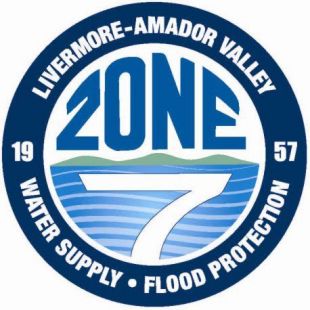LIVERMORE — The Zone 7 Water Agency Board recently considered how rate adjustments could impact 81 agricultural users in the South Livermore Valley Plan.
Board Vice President Sarah Palmer first raised the issue during a Sept. 1 board discussion about components that needed to be added to the untreated water bill. She referred to pleas from grape growers, who reported that water prices make a major impact on their business costs. The South Livermore Valley Plan was created in the 1980s with a goal of securing 5,000 acres for vineyards; today 2,300 acres are planted with wine vines.
“I don’t want to set a policy on something when I do not know how much truly it is going to affect our local ag folks,” said Palmer. “I object to making an actual policy decision on these things without understanding those issues.”
Director Olivia Sanwong raised a similar concern, which prompted director Michelle Smith McDonald to say she wanted a better understanding of how agriculture would be impacted.
McDonald said she heard what Wente Family Vineyards COO Karl Wente said to the board during audience communications at the meeting.
“I’m not interested in raising rates significantly or making a decision that feels a little bit blind at this point,” McDonald continued.
Wente, who heads the oldest Valley winery dating back to the 19th century, told the board that right now is critical for the continuation and expansion of the Livermore Wine Country.
Although olives, pistachios and even hops for beer are grown in South Livermore, the overwhelming driver of agriculture in the Valley has been wine vineyards, said Wente.
Typically, the life of wine vines is 20 or 30 years, so now many growers are facing the big question of how to replant, despite the toll taken by inflation, Wente told a reporter in an interview.
Wente said that UC Davis has been studying the Livermore Wine Country for the past two years in a report co-sponsored by the Tri-Valley Conservancy (TVC).
During an interview with The Independent, Laura Antrim, the new general manager of TVC, said that UC Davis is focusing on how the Livermore Valley can be made more profitable; looking at the cost of water for other northern California vineyards — which compete against Livermore — will not be in the study.
Wente said that while the UC Davis study may not directly deal with other areas’ water costs, nevertheless, they are a crucial factor in a competitive situation. He listed the benefits of the wineries’ presence, including rock concerts they have hosted, wine tasting benefit events, and a general positive economic impact on the whole Valley.
Sanwong, McDonald and Palmer alluded to these benefits when they made comments about wanting to keep the ag water prices down as much as possible.
Raftelis, a consulting firm, completed a cost-of-service study for all agency water in 2019. Four of the seven directors were elected in 2018 or later years. With the personnel turnover, Zone 7 General Manager Valerie Pryor wanted to see whether the current board has the same ideas about costs factored into agricultural water. The costs are divided into three categories: administration of local water rights; managing and monitoring groundwater; and overall agency overhead, which includes labor costs, utilities, legal services, IT (Information Technology), building maintenance and related topics.
Pryor determined she had a sense of the board’s will. She told a reporter earlier this week that the consensus was not to charge agriculture for administering local water rights or having to pay for groundwater management and monitoring.
The staff will write a recommendation to address the agency overhead cost for the board’s Finance Committee, which will meet Sept. 28. The next step will take place at the board’s regular October meeting, when it sets the water rates for calendar year 2022.






